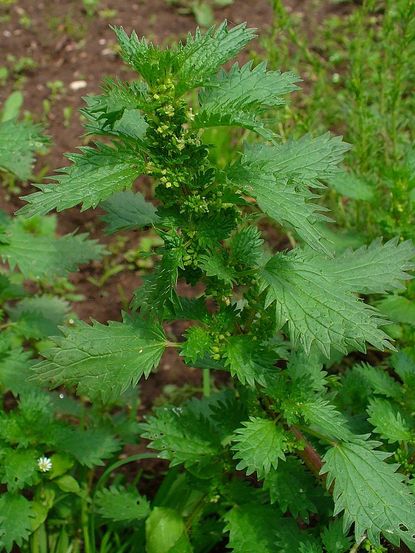What Is Burning Nettle: Getting Rid Of Burning Nettle Plants
What is burning nettle, and what does it look like? It resembles stinging nettle, and its name describes the misery it can inflict.


You’ve likely heard of stinging nettle, but what about its cousin, burning nettle? What is burning nettle, and what does it look like? Read on to learn more about burning nettle plants.
Burning Nettle Plants
The plant earns its name, and if you accidentally brush up against the leaves, you’re unlikely to forget the experience.
Burning nettle (Urtica urens) grows in various areas across the Eastern, Central, and Western United States. It is a small to mid-size, upright, broadleaf weed with bristly, deeply serrated leaves. Small, greenish white flowers appear from late spring until late autumn.
Burning nettle is found primarily in disturbed areas such as ditches, roadsides, fences, rows, and, unfortunately, in gardens.
Burning Nettle vs. Stinging Nettle
Burning nettle, also known as small nettle or annual nettle, generally reaches heights of 5 to 24 inches (13-61 cm). It is native to Europe.
Stinging nettle (Urtica dioica), native to North America, is a much taller plant that can grow as tall as 3 to 10 feet (1-3 m.) but can reach heights of 20 feet (6 m.) when conditions are just right. Otherwise, the two plants share many similarities.
Burning nettle germinates in a span of time from late autumn to early spring and blooms in winter and spring, although plants may produce greenish-yellow flowers all year in mild climates.
Gardening tips, videos, info and more delivered right to your inbox!
Sign up for the Gardening Know How newsletter today and receive a free download of our most popular eBook "How to Grow Delicious Tomatoes."
Stinging nettle seeds germinate in spring and blooms appear from spring until autumn. Both nettle types display leaves covered with long, bristly hairs.
Getting Rid of Burning Nettle
Burning nettle plants are stubborn and getting rid of this noxious weed requires persistence.
Tilling sounds like a workable plan, but usually just distributes the rhizomes and makes the problem even worse.
Pulling the plants by hand is the best means of control, but be sure to protect your skin with sturdy gloves, long pants, and long-sleeved shirts. Pull weeds carefully because any pieces of rhizomes left behind will generate more plants. You’ll have better luck at getting the entire weed when the soil is damp, and a garden fork or a long, narrow tool such as a dandelion weeder can make it easier to get the long taproots.
Always pull the weeds before they bloom and set seeds. You can also mow the weeds very closely or cut them down with a weed trimmer – again, always before the plant blooms. Be persistent and pull new weeds as they sprout.
If none of these methods is working, discuss with your extension service agent the different ways you can safely eradicate this weed with organic herbicides or other treatments.

A Credentialed Garden Writer, Mary H. Dyer was with Gardening Know How in the very beginning, publishing articles as early as 2007.
-
 Urban Composting Guide: How To Compost In The Middle Of The City
Urban Composting Guide: How To Compost In The Middle Of The CityUrban composting does not have to be daunting. You can compost in the city, and maybe even try some urban worm composting!
By Mary Ellen Ellis
-
 Shrub Diseases And Pests To Watch Out For
Shrub Diseases And Pests To Watch Out ForShrub diseases and pests can be challenging. Learn how to recognize and eradicate them before they can present a danger to your plants.
By Susan Albert